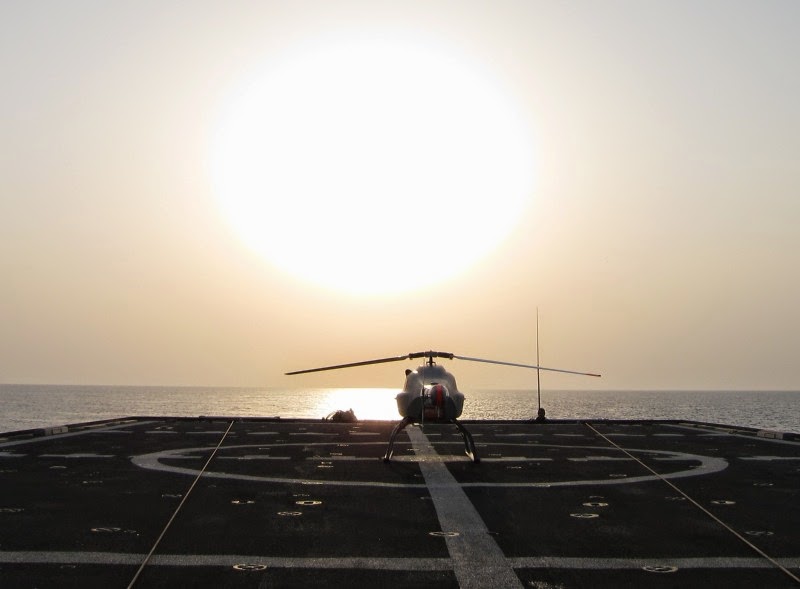OPVs and Drones: An Affordable Match
Unmanned systems are finding use on a larger variety of naval vessels, including those normally too small to operate helicopters. Navies and coast guards operating Offshore Patrol Vessels (OPVs) in particular, are finding that unmanned systems can greatly extend the reach and versatility of these compact combatants. OPVs as a category are not well-defined; they're generally smaller than a corvette, larger than a patrol boat, and feature efficient diesel engines for long endurance,though generally at slower speeds than larger combatants. They sometimes feature small flight decks (but usually not hangars), small-to-medium caliber naval guns, and a few have short-range surface-to-air missiles for self defense. Though often conceptualized for coastal defense, the endurance and sea-keeping ability of OPVs often allows them to support global, open ocean missions.
The list of Navy OPVs operating as drone motherships is growing rapidly. The new Irish Offshore Patrol Vessel LÉ Samuel Beckett recently conducted sea trials and is equipped to operate both Unmanned Air Vehicles (UAVs) and Unmanned Underwater Vehicles (UUVs). OPVs like the 1,900 ton Beckett support a variety of missions including coastal security, counter-narcotics/counter-piracy patrols, search and rescue, and fisheries enforcement. The 1,800 ton Blohm+Voss' MEKO OPV advertises the capability to launch and recover unmanned surface vessels at up to sea state 5 and embark 4-6 UAVs. DCNS' Gowind-class L'Adroit OPV has flown the S-100 CAMCOPTER and can also operate USVs. Spain flew Saab's Skeldar UAV from the deck of the OPV BAM Meteoro during its anti-piracy deployment in the Gulf of Aden last year. Finally, the U.S. Coast Guard's future "Offshore Patrol Cutter" will be designed from the keel up to accommodate UAVs, UUVs, and USVs.
Navies are embracing these smaller, more lightly armed, long range ships quite simply because they are more affordable for many missions than larger surface combatants. And whereas just a few years ago, ships of this size were limited to detecting only what their surface search radars could see, UAVs give them the ability to detect, identify, and track contacts well over the horizon. The addition of UUVs will give OPVs a mine-hunting and environmental survey capability and USVs will enhance their anti-surface warfare reach.
For much more on this versatile category of vessel, visit Chuck Hill's Blog.
 |
| Skeldar operating on a Spanish OPV. |
Navies are embracing these smaller, more lightly armed, long range ships quite simply because they are more affordable for many missions than larger surface combatants. And whereas just a few years ago, ships of this size were limited to detecting only what their surface search radars could see, UAVs give them the ability to detect, identify, and track contacts well over the horizon. The addition of UUVs will give OPVs a mine-hunting and environmental survey capability and USVs will enhance their anti-surface warfare reach.
For much more on this versatile category of vessel, visit Chuck Hill's Blog.

Comments
Post a Comment